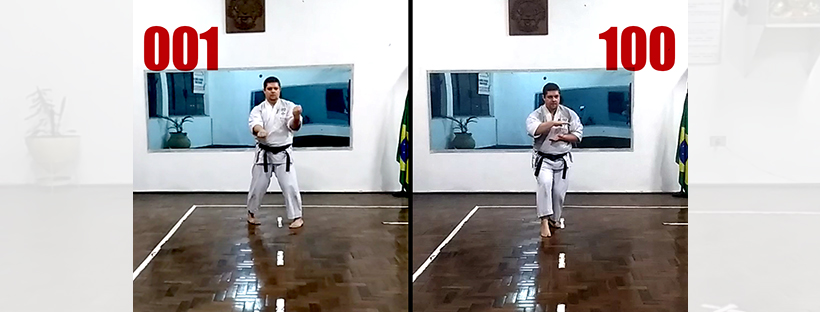October 25th is a special date for karateka around the world. After all, it’s Karate No Hi, World Karate Day, established in 2005 by Okinawa Prefecture. The date was chosen because it was when, in 1936, an important meeting of masters took place to define the direction of art, including discussing the change of the old name “Toude” to “Karate-Do” (incidentally, I intend to talk more about this meeting in the future).
Of course, it is a very important landmark of celebration. In Okinawa, it’s beautiful and impressive to see practitioners taking Kokusai Street in Naha to perform kata together. In Brazil, there is Enbukai, which brings together Karate schools. And around the world, the 100 Kata Challenge has become a tradition. This challenge was proposed in 2014 by James Pankiewicz, owner of the famous Dojo Bar and Asato Dojo in Okinawa. It was quickly adopted by various schools and karateka, as it can be done anywherejust by having time and disposition.
The challenge is a way of celebrating the date with something that is the greatest inheritance left to us by the great masters (the kata) and at the same time putting us literally into the practice of a part of the karate philosophy that I believe is present in every dojo, though said in different ways: create the purpose of the effort.
I already knew the 100 Kata Challenge from other years, but this (2019) was the first time I decided to participate, motivated by the participation of fellows from Muidokan Karate Kenkyukai and also simply by the “why not?”. Karate provides so much for me and is such an important part of my life that it seems appropriate to mark Karate No Hi in some way. The celebration of karate is actually practicing every day, of course, but the challenge seems like a healthy and fun way (the peculiar way only karateka knows) of being part of something bigger.
My impression was… that in the end it was easier than I expected. Not that it wasn’t tiring, but as my karate training is regular and our dojo usually has some heavy workout, an hour and a half just performing kata was a transposable challenge.
Of course, you can’t go full force from start to finish, but managing the pace and intensity is perfectly possible. I had seen earlier reports of relatively famous karateka that seemed to be a herculean work, but I think it was more the romanticism of the narrative. I believe it is a possible practice for anyone who trains frequently and is in good physical condition.
The start of the Challenge was after our normal dojo training. That is, I had already trained Karate for an hour and done about 20 kata during that time. I took the opportunity to perform some kata that I am still learning and trying to develop, paying attention to certain mechanics and noticing others in the process. That is, well within what is a Karate training, the theory put into practice and the practice consolidating the theory.
Having this different moment, focused entirely on kata, was certainly a valid experience, which I intend to repeat in the coming years. The feeling of progressing from 1 to 100 is also gratifying, as it is a physical and mental overcoming that requires mindfulness and patience. Any variety of training that takes us out of the comfort zone can only be positive!
At the time, I practiced the following kata (many repeatedly):
- Sanchin
- Seienchin
- Tsuki No Kata
- Bassai Dai
- Gekisai Sho
- Taikyoku Sono Ichi
- Taikyoku Sono San
- Pinan Sono Ni
- Pinan Sono Ichi
- Yantsu
- Pinan Nidan
- Naihanchi Shodan
- Tensho
- Saifa
- Sanseru
- Pinan Sono San
- Pinan Sono Yon
- Seipai
The number of repetitions and list of kata made in the Challenge is free for the practitioner, which leaves it up to the individual to program according to their particular curriculum and study.
As it was a special moment, I took the opportunity to record the practice and edit the video in accelerated format. Below is for those who want to check it out.
Until the next Karate No Hi!
